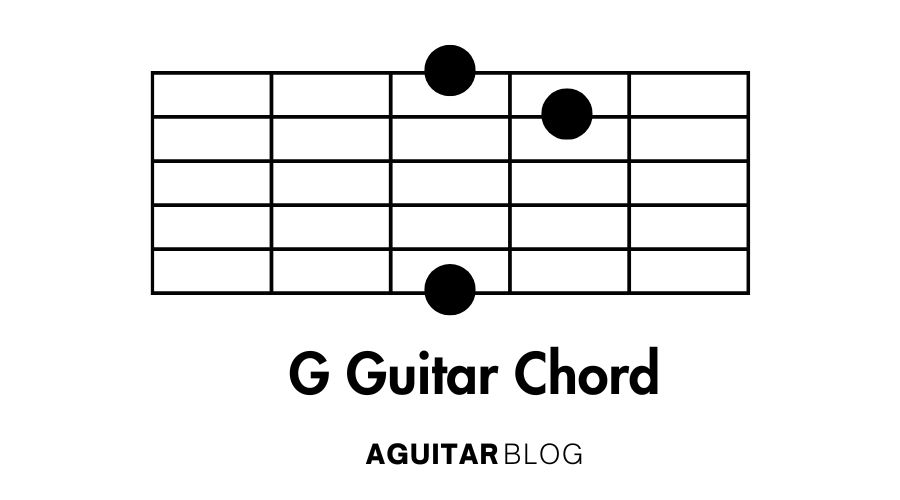The G guitar chord is one of the most fundamental and versatile chords every guitarist should learn. This guide will walk you through everything you need to know about playing, mastering, and incorporating the G chord into your music.
What is a G Guitar Chord?
The G chord is a major chord that forms the foundation of many popular songs. It’s part of the CAGED system, making it essential for beginners and experienced guitarists alike.
Notes in the G Guitar Chord:
- Root: G
- Major Third: B
- Perfect Fifth: D
The chord’s bright and uplifting sound makes it a favorite in genres like pop, rock, country, and folk.
How to Play the G Guitar Chord

Step-by-Step Instructions:
- Place your middle finger on the 3rd fret of the low E string (6th string).
- Place your index finger on the 2nd fret of the A string (5th string).
- Place your ring finger on the 3rd fret of the high E string (1st string).
- Strum all six strings for a full, resonant sound.
Strumming Tips:
- Strum with a relaxed wrist for even sound.
- Avoid pressing too hard to keep notes clean.
Video Tutorial
For visual learners, a video tutorial is a great way to understand the finger placement and strumming technique.
Common Mistakes and Tips for Playing the G Guitar Chord
Common Mistakes:
- Muted Strings: Ensure your fingers don’t accidentally touch adjacent strings.
- Weak Sound: Press firmly on the frets to avoid buzzing.
- Low E String Miss: Beginners often miss the low E string, which is vital for the G chord’s full sound.
Tips for Playing the G Chord:
- Use the tips of your fingers for precise note clarity.
- Practice switching between G and other chords like C, D, or Em to improve transitions.
- Experiment with strumming patterns to find what works for your song.
G Guitar Chord Variations
Basic Variations:
- Gmaj (G Major): The standard G chord.
- Gm (G Minor): Adds a melancholic tone.
- G7 (G Dominant 7th): Used in blues and jazz.
- Gmaj7 (G Major 7th): A dreamy, jazzy version.
- Gm7 (G Minor 7th): Perfect for soulful and jazzy tunes.
Advanced Variations:
- Gsus4 (Suspended 4th): A bright and unresolved sound.
- G6 (Major 6th): Adds richness and depth.
- Gm6 (Minor 6th): A more complex minor variation.
- Gadd9 (Add Ninth): Adds a melodic, pop-like flavor.
- Gaug (Augmented): Great for creating tension.
- Gdim (Diminished): Adds drama and dissonance.
Chord Progressions and Songs Featuring the G Guitar Chord
Common Progressions:
- G – C – D: The foundation of countless pop and rock songs.
- G – Em – C – D: Known as the “Axis of Awesome” progression.
- G – Am – D – G: A folk-inspired progression.
Songs Featuring the G Chord:
- “Wonderwall” by Oasis
- “Sweet Home Alabama” by Lynyrd Skynyrd
- “Knockin’ on Heaven’s Door” by Bob Dylan
Tips for Practicing the G Guitar Chord
- Slow and Steady: Focus on clean notes before increasing speed.
- Use a Metronome: Practice timing for smooth transitions.
- Play Along with Songs: Apply the G chord in real music for engaging practice.
- Daily Repetition: Spend at least 5-10 minutes a day on chord exercises.
Related Chords to G Guitar Chord
Chords to Explore Alongside G:
- D Major: A common pair with G in progressions.
- C Major: Often transitions smoothly from G.
- Em (E Minor): Works well with G in melancholic or moody pieces.
- Am (A Minor): Adds emotional depth when combined with G.
Conclusion
The G guitar chord is a cornerstone of modern music. By mastering its variations and incorporating it into songs, you’ll unlock endless possibilities for creativity. Use this guide to refine your technique and explore the world of music with confidence!